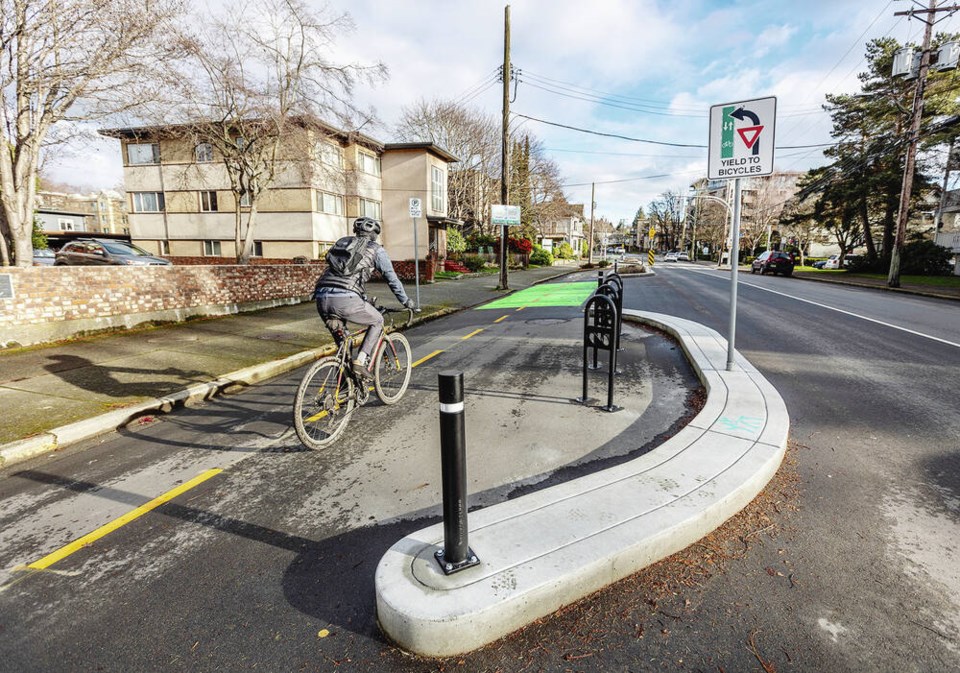The City of Victoria will have to maintain the accelerated pace of greenhouse-gas reductions it saw during the pandemic if it hopes to hit its target of cutting emissions in half by 2030, city staff say.
According to Laura Berndt, the city’s manager of energy and climate action, Victoria saw an increased reduction of emissions between 2019 and 2022.
“If we were able to kind of keep up that pace, then we would be on track. However, we estimate that a good influence on some of those emissions reductions was likely due to COVID and we’re still sort of catching up,” she said. “We’ll have to see whether those trends are continuing in 2023 and 2024, or whether there’s a little bit of rebound, especially with respect to transportation emissions.”
In a presentation to council last week, Berndt noted the city emitted about 350,000 tonnes of CO2 in 2022, but has to keep reducing that figure by 3.5 per cent or 14,000 tonnes annually to stay on track — 14,000 tonnes is the equivalent of driving 3,300 gas vehicles for one year or heating 1,800 households for one year.
She said those reductions would have to come even amid the city’s growth and climate-change effects that are faster and more intense than anticipated.
To keep the city on track, staff have considered accelerating climate action in several areas, including the phase-out of oil heating and transition to a “circular” economy.
Berndt said only an estimated 350 homes in the city still use oil for heat, and the city is on track to get that to zero by 2030.
As for working toward a circular economy, the city has programs regulating reuse of wood from building demolitions, restricting single-use items, and doing outreach on re-use and waste reduction.
Thursday’s presentation also laid out what the city would have to do to align itself with the province’s goal of net-zero emissions by 2050.
Victoria’s current target of 100 per cent renewable energy by 2050 would bring the city close to net zero.
It would also have to adopt a new 2030 emissions-reduction target for existing buildings.
A staff report noted that kind of goal is essential to meet the city’s climate commitments, as buildings produce more than 50 per cent of community emissions, with natural gas for heat making up 81 per cent of those emissions.
Staff also noted investments and policy focused on urban-forest expansion, zero waste, sustainable mobility and resilient infrastructure will be required in a comprehensive approach to climate mitigation and adaptation.
Coun. Jeremy Caradonna suggested the program could also use improved communications that includes celebrating successes, informing the city on climate-action progress and better resident engagement.
“They want to get involved — they want to feel like they are part of the solution,” he said. “And right now, they’re just not feeling like they’re being asked to do anything.”
Coun. Dave Thompson suggested staff could also be more aggressive with infrastructure plans like expanding the active transportation network.
A staff presentation is expected next month on plans for Douglas Street transit improvements that are likely to include redrawing the corridor.
Staff said the city is also on track to meet its tree-planting targets. The city has about 150,000 trees overall with approximately 34,000 trees on city property. The target is to add 300 new trees annually.



